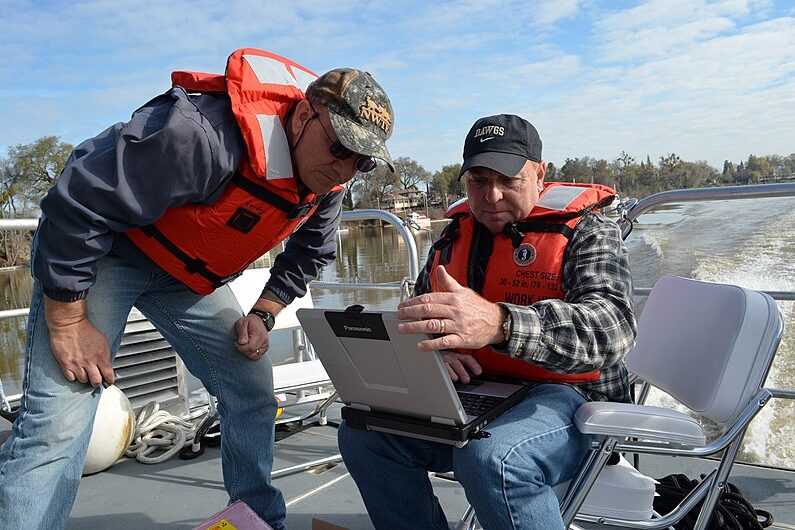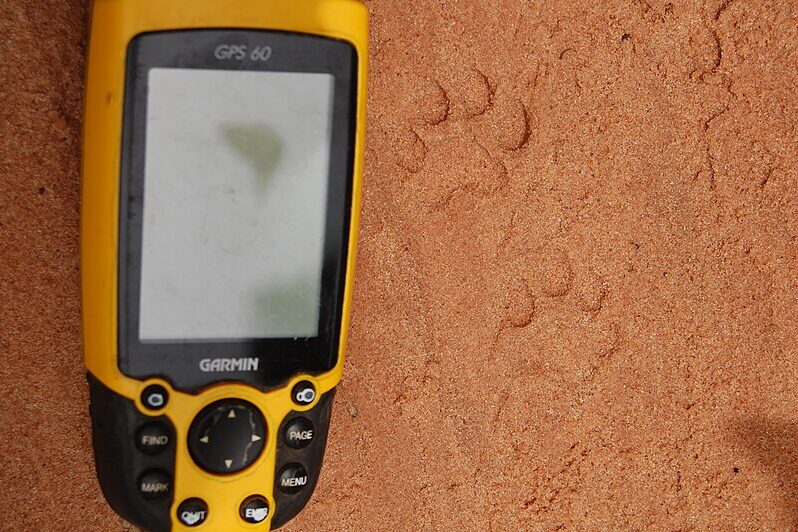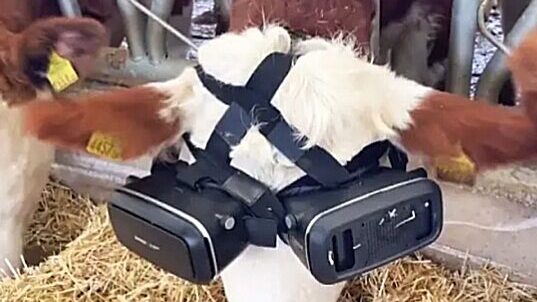The Wearable Tech That Decoded Dog Barks

Imagine a world where your dog’s barks weren’t just noise, but a clear language, a window into their feelings. Not just random woofs, but distinct sounds conveying joy, fear, or even anxiety. Scientists harnessed wearable technology, analyzing countless barks, correlating them with observed behaviors. They weren’t just listening; they were translating, deciphering the canine code. These researchers weren’t just studying animals; they were building a bridge, fostering deeper understanding, and strengthening the bond between humans and their furry companions. It’s like watching a silent conversation become audible, a connection amplified by technology.
The technology’s impact wasn’t just about identifying emotions; it revealed the complexity of canine communication, the nuances of their vocalizations. Experts noted that dogs use a wide range of barks, each with its own subtle variations in pitch, tone, and rhythm. They showed that technology could provide insights into animal sentience, opening new avenues for understanding their emotional lives. This innovation also highlights the potential for future applications in veterinary care, allowing for more precise diagnosis of animal distress. The data obtained from these devices could lead to a deeper understanding of animal psychology.
The Facial Recognition Software That Read Chimpanzee Expressions

Picture a screen displaying a chimpanzee’s face, not just a static image, but a dynamic display of emotions, revealing subtle shifts in expression. Not just smiles and frowns, but a spectrum of feelings, from playful curiosity to deep sadness. Scientists developed facial recognition software, analyzing countless videos, mapping muscle movements to emotional states. They weren’t just observing; they were interpreting, translating the primate language of the face. These researchers weren’t just studying animals; they were peering into their minds, uncovering hidden depths, and revealing the shared emotional landscape of humans and primates. It’s like watching a mirror reflect our own emotions, highlighting the common thread of sentience.
The software’s application wasn’t just about identifying emotions; it revealed the complexity of chimpanzee social interactions, the subtle cues that govern their relationships. Experts noted that chimpanzees use a wide range of facial expressions, each with its own subtle variations in muscle movement. They showed that technology could provide insights into the evolutionary roots of human emotions, tracing our emotional heritage back to our primate ancestors. Furthermore, this technology can be used to monitor the well-being of captive chimpanzees, ensuring their emotional needs are met. The implications extend to conservation efforts, providing a non-invasive way to study wild populations.
The Thermal Imaging That Revealed Elephant Stress

Envision a herd of elephants, not just a group of animals, but a community with shared emotions, experiencing stress and anxiety. Not just visible behaviors, but subtle changes in body temperature, revealing their inner states. Scientists utilized thermal imaging, capturing heat signatures, correlating them with observed behaviors. They weren’t just observing; they were measuring, quantifying the physiological markers of stress. These researchers weren’t just studying animals; they were understanding their vulnerabilities, recognizing their needs, and striving to improve their welfare. It’s like watching a hidden language of heat reveal the inner turmoil of these gentle giants.
The thermal imaging’s application wasn’t just about identifying stress; it revealed the sensitivity of elephants to environmental changes, the impact of human activity on their well-being. Experts noted that elephants exhibit distinct thermal patterns when experiencing stress, reflecting changes in their autonomic nervous system. They showed that technology could provide insights into the ethical implications of human-animal interactions, advocating for more compassionate conservation practices. This method also offers a non-invasive way to assess the effects of tourism and habitat encroachment on elephant populations. The resulting data can be crucial for developing effective conservation strategies.
The Acoustic Monitoring That Deciphered Whale Songs

Imagine listening to whale songs, not just a series of sounds, but a complex language, conveying emotions, sharing information, and strengthening social bonds. Not just random calls, but distinct patterns, revealing joy, sadness, and even fear. Scientists deployed acoustic monitoring systems, recording countless whale songs, analyzing their structure and context. They weren’t just listening; they were decoding, translating the underwater symphony of emotions. These researchers weren’t just studying animals; they were listening to their stories, understanding their connections, and appreciating the richness of their communication. It’s like watching a silent world become vocal, a chorus of emotions resonating through the depths of the ocean.
The acoustic monitoring application wasn’t just about identifying emotions; it revealed the complexity of whale social structures, the intricate web of relationships that bind their communities. Experts noted that whales use a wide range of vocalizations, each with its own subtle variations in frequency, duration, and pattern. They showed that technology could provide insights into the cognitive abilities of whales, challenging our assumptions about animal intelligence. Additionally, this research contributes to our understanding of how noise pollution impacts marine life, informing policies aimed at protecting their habitats. The ability to decipher these songs also opens avenues for interspecies communication research.
The Heart Rate Monitors That Gauged Penguin Anxiety

Picture a group of penguins, not just a cluster of birds, but a community experiencing stress and anxiety in the face of environmental changes. Not just visible behaviors, but subtle changes in heart rate, revealing their inner turmoil. Scientists employed heart rate monitors, capturing physiological data, correlating it with observed behaviors. They weren’t just observing; they were measuring, quantifying the physiological markers of anxiety. These researchers weren’t just studying animals; they were understanding their vulnerabilities, recognizing their needs, and striving to protect their habitats. It’s like watching a delicate balance of life, where technological insight shows the impact we have on our world.
The heart rate monitoring application wasn’t just about identifying anxiety; it revealed the sensitivity of penguins to climate change, the impact of human activity on their breeding success. Experts noted that penguins exhibit distinct heart rate patterns when experiencing stress, reflecting changes in their autonomic nervous system. They showed that technology could provide insights into the ethical implications of human-animal interactions, advocating for more sustainable conservation practices. This technology can also be used to assess the effectiveness of conservation efforts, providing real-time data on the physiological impact of environmental changes. The data gathered helps refine strategies to protect vulnerable penguin populations.
The GPS Tracking That Mapped Wolf Social Dynamics

Envision a pack of wolves, not just a group of predators, but a complex social network, with intricate relationships and emotional bonds. Not just visible movements, but detailed maps of their interactions, revealing their emotional dynamics. Scientists utilized GPS tracking, capturing location data, correlating it with observed behaviors. They weren’t just observing; they were mapping, visualizing the social landscape of the wolf pack. These researchers weren’t just studying animals; they were understanding their communities, appreciating their connections, and recognizing the importance of their social structures. It’s like watching a hidden world become visible, a tapestry of relationships revealed by technology.
The GPS tracking’s application wasn’t just about mapping movements; it revealed the complexity of wolf social hierarchies, the intricate balance of power and affection within the pack. Experts noted that wolves exhibit distinct patterns of movement, reflecting their social roles and emotional bonds. They showed that technology could provide insights into the evolutionary roots of social behavior, tracing our own social instincts back to our canine ancestors. These studies also aid in mitigating human-wildlife conflict, providing data that guides the development of coexistence strategies. The insights gained help in understanding how habitat fragmentation impacts wolf pack dynamics.
The Virtual Reality That Simulated Animal Habitats

Imagine stepping into a virtual world, not just a digital landscape, but a realistic simulation of an animal’s habitat, allowing us to experience their environment from their perspective. Not just passive observation, but active immersion, allowing us to understand their emotional responses to their surroundings. Scientists developed virtual reality simulations, recreating animal habitats, incorporating sensory data and behavioral patterns. They weren’t just observing; they were experiencing, empathizing with the animal’s emotional experience. These researchers weren’t just studying animals; they were understanding their world, appreciating their challenges, and advocating for their well-being. It’s like watching a barrier dissolve, bridging the gap between human understanding and animal experience.
The virtual reality’s application wasn’t just about simulating habitats; it revealed the importance of environmental factors in shaping animal emotions, the impact of habitat loss and degradation on their well-being. Experts noted that animals exhibit distinct emotional responses to different environmental stimuli, reflecting their adaptive strategies and survival instincts. They showed that technology could provide insights into the ethical implications of habitat conservation, advocating for more responsible land management practices. This technology also serves as an educational tool, fostering empathy and understanding among the public. It provides a unique opportunity to experience the world from an animal’s perspective, promoting conservation awareness.
The AI Analysis of Birdsong

Picture a field of birds, not just a chorus of sounds, but a complex language, conveying emotions, marking territory, and finding mates. Not just random chirps, but distinct patterns, revealing joy, fear, and even warning. Scientists utilized AI analysis, capturing bird songs, and analyzing their structure and context. They weren’t just listening; they were decoding, translating the aerial symphony of emotions. These researchers weren’t just studying animals; they were listening to their stories, understanding their connections, and appreciating the richness of their communication. It’s like watching a silent world become vocal, a chorus of emotions resonating through the trees.
The AI analysis’ application wasn’t just about identifying emotions; it revealed the complexity of birdsong, the intricate web of meaning woven into their vocalizations. Experts noted that birds use a wide range of songs, each with its own subtle variations in frequency, duration, and pattern. They showed that technology could provide insights into the cognitive abilities of birds, challenging our assumptions about animal intelligence. The data collected can also be used to monitor the health of bird populations, providing early warnings of environmental changes. This ability to analyze intricate song patterns aids in the preservation of endangered species.
The Drones That Observed Orangutan Family Dynamics

Imagine watching orangutans, not just from afar, but from a birds-eye view, observing their family dynamics, their emotional bonds, and their daily lives. Not just visible behaviors, but detailed maps of their interactions, revealing their emotional dynamics. Scientists utilized drones, capturing aerial footage, correlating it with observed behaviors. They weren’t just observing; they were mapping, visualizing the social landscape of the orangutan families. These researchers weren’t just studying animals; they were understanding their communities, appreciating their connections, and recognizing the importance of their social structures. It’s like watching a hidden world become visible, a tapestry of relationships revealed by technology.
The drones’ application wasn’t just about mapping movements; it revealed the complexity of orangutan social hierarchies, the intricate balance of power and affection within the families. Experts noted that orangutans exhibit distinct patterns of movement, reflecting their social roles and emotional bonds. They showed that technology could provide insights into the ethical implications of deforestation, advocating for more responsible land management practices. This method allows for non-invasive monitoring of orangutan populations, minimizing disturbance to their natural behavior. The data helps in developing effective conservation strategies, ensuring the survival of these endangered primates.


